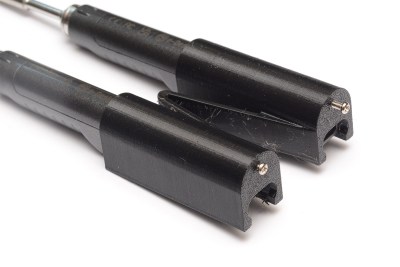You know how it is. You’re all cozy in bed but not quite ready to doze off. You’re reading Hackaday (Hackaday is your go-to bedtime reading material, right?) or you’re binge-watching your latest reality TV obsession on your tablet. You feel the tablet growing heavier and heavier as your arms fatigue from holding it inches above your face. You consider the embarrassment you’ll endure from explaining how you injured your nose as the danger of dropping the tablet gradually increases. The struggle is real.
[Will Dana] has been engineering his way out of this predicament for a few years now, and with the recent upgrade to his iPad suspension system he is maximizing his laziness, but not without putting in a fair amount of hard work first.
 The first iteration of the device worked on a manual pulley system whereby an iPad was suspended from the ceiling over his bed on three cords. Pulling on a cord beside the bed would raise the bracket used for holding the iPad out of the way while not in use. This new iteration takes that pesky cord pulling out of the user’s hands, replacing it with a motorized winch. A spot of dark ink on one of the cords in combination with a light sensor helps to calibrate the system so that the ESP32 which controls it always knows the proper limits of operation.
The first iteration of the device worked on a manual pulley system whereby an iPad was suspended from the ceiling over his bed on three cords. Pulling on a cord beside the bed would raise the bracket used for holding the iPad out of the way while not in use. This new iteration takes that pesky cord pulling out of the user’s hands, replacing it with a motorized winch. A spot of dark ink on one of the cords in combination with a light sensor helps to calibrate the system so that the ESP32 which controls it always knows the proper limits of operation.
Of course, if, like [Will], you’re using an ESP32, and your room is already fully controlled by a voice interface, you may as well integrate the two. After all, there is no sense in wasting precious energy by pressing buttons. Utter a simple command to Alexa once you’re tucked in, and it’s time for hands-free entertainment.
We’ve covered several of [Will]’s previous creations, such as his Motorized Relay Computer and Harry Potter-inspired Sorting Hat.
Continue reading “Tablet Suspension System Avoids Fatigue At Bedtime”


















